24 Things To Do in Valletta, Malta
Discover 24 of the best things to do in Valletta, Malta, as well as things to drink and eat, on your next vacation there.
Malta’s popularity skyrocketed after several movies and TV shoots used it as a filming location. Most notably, at least for super fans like myself (and half the world), Game of Thrones. The capital city of Valletta is where most people start their journey in Malta, and it’s a great base from which to explore the island.
Disclaimer: Lose the Map contains affiliate links and is a member of Amazon Services LLC Associates Program. If you make a purchase through an affiliate link, I receive a small commission at no extra cost to you.

Valletta itself is an incredible city for travelers. Safe and easily walkable, it balances a feeling of community and the charm of a small city with a loooong list of things to do, see, and most importantly, eat.
Malta has become a great long weekend destination for travelers in Europe, but you will want to spend at least two to three days exploring all that Valletta has to offer. Start with some of the things on the list below! But first…
Disclosure: This post may contain affiliate links, meaning I get a commission if you make a purchase through my links, at no cost to you.
Valletta Travel Guide
Intro to Valletta, Malta
The capital of the Maltese archipelago, situated on the main island of Malta, Valetta is a historic city with a variety of cultural and historic influences. These include Sicilian and Arabic, a mixture of influences reflected in the Maltese language, as well as remnants of British rule.
Though the city of Valletta sprawls out into multiple suburbs, when people usually talk about Valletta proper, they are talking about the historic city situated within the city walls.
Most peoples’ first exposure to this part of town is via the impressive City Gate of Valletta. Once you pass the Triton Fountain out front and enter the Valletta City Gate, the first buildings you encounter seem ripped from centuries ago.
- Hotels: Book incredible hotels in Valletta
- Flights: Book flights to Malta with Expedia.com
- Tours: Use GetYourGuide in Valletta to explore the city and its history
- I stayed at The Cumberland by NEU Collective (and loved it!)
History of Valletta
Though the city may seem ancient, Grand Master Jean Parison de la Vallette founded Valletta in 1566 (after whom the city was named).
During this time, the Knights of Malta, also known as the Knights of the Order of St. John, ruled the island for 268 years, from 1530 to 1798. They constructed most of the ancient forts and other defenses visible on the island today.
Grand Master de la Vallette built a wonderful palace that has now become a tourist attraction. When you visit Palace State Rooms, you can get some insight into these first days of the city’s founding.
Malta then became a British colony from 1813 to 1964, which is why some general British-isms, like driving on the left side of the road, have remained.
In fact, Queen Elizabeth II lived in Valletta for a few years while Prince Philip served here as a naval officer. Her former home is supposed to open to the public at some point. However, it’s currently closed. Hopefully, it gets added onto the list of things to do in Valletta soon.
Filming in Valletta
Perhaps all this majestically preserved history is the reason why Malta, and Valletta in particular, have been used in so many works of film and television. The city retains a medieval atmosphere that’s hard to replicate with plywood sets, and also serves as a great setting for fantasy epics.
The generous local tax credit for filming definitely helps as well, but let’s focus on the location of Valletta, Malta itself for now, particularly the area within the city walls.
Things to Do in Valletta, Malta
1) Explore the Interior of St. John’s Co-Cathedral
Malta is a deeply Catholic country, reflected in the numerous grand cathedrals and churches that dot its streets. However, the most beautiful of all is hands down St. John’s Co-Cathedral. It’s widely considered one of the grandest churches in the world, with a fascinating history attached to the Knights of Malta.
In this ornate cathedral dedicated to Saint John the Baptist, many Knights have been laid to rest. The reason it is known as St. John’s Co-Cathedral, rather than a simple cathedral, is because it is equal in status to St. Paul’s Cathedral in Mdina, the seat of Malta’s Archbishop.
You have to dress appropriately to enter St. John’s Co-Cathedral, as with any religious institution. Ideally you should cover your shoulders; wraps are provided at the entrance if you’re wearing a sleeveless shirt. Shorts should go to the knees, if not past them.
Entrance Fee: Adults – 15 Euros
Opening Hours: Monday-Saturday, 9 a.m. – 4:45 p.m.; last admission is at 4:15 p.m. Closed Sundays.
2) Visit Ħal Saflieni Hypogeum
UNESCO designates all of Valletta as a World Heritage Site. However, it’s not the only one on the island. Another site is the underground Neolithic chamber of Ħal Saflieni Hypogeum. This subterranean marvel is a short 15-minute drive from Valletta city centre, in the neighborhood of Paola.
Of all the things to do in Valletta, Malta, this attraction may be one of the most eerie and fascinating. It is an underground complex of the island nation’s prehistoric people. Within it lie the remains of over 7,000 former Maltese residents that lived at some point between 4,000 B.C. and 2,500 B.C.
Local Tip: You can only enter in small guided groups, and you cannot take photos. This is to preserve the integrity of the underground chambers. You must either reserve weeks ahead of time, or go to Fort St. Elmo, which opens at 9 a.m., and be one of the first people online to get the available next-day tickets. I used this tactic cause naturally, I failed to plan ahead.
The tour guide will point out the red ochre decorations of the ancient Maltese people. You will also hear a whole lot of theories about why they vanished one day. I won’t spoil any more of the information here; go take the tour yourself!
Entrance Fee: 35 Euros
Opening Hours: Daily, 9 a.m. – 5 p.m.
3) Tour Casa Rocca Piccola
Get a taste of Maltese royalty by touring a 16th century palace in Valletta. Besides being a stunning residence, it provides a glimpse into Malta’s history, especially if you take a guided tour.
Casa Rocca Piccola is actually still used as a home by the family today. I discovered this when I came across the Marquis de Piro himself. He was talking about one of his ornate pieces of furniture to another group of tourists.
Don’t worry though, the family won’t be dressed in royal purple robes even if you do come across them. Their life seems pretty modern.
In fact, one seemingly out of place modern, simple desk we came across was apparently put in so the Marquis’ grandson could study, because 300-year old furniture isn’t the best for doing last minute college essays.
You can actually stay in the B&B that’s part of Casa Rocca Piccola. If you do, you get a free guided tour of the house. As well as a pretty cool place to rest at the end of a day of exploring Valletta.
Entrance Fee: 10 Euros
Opening Hours: Monday – Saturday; 10 a.m. – 5 p.m. (last admission at 4 p.m.). Tours take place on the hour.
4) Shop at the Eco Market at Upper Barrakka Gardens
Everyone will tell you to visit the Upper Barrakka Gardens for the Saluting Battery. However, my favorite part of this visit was touring the Eco Market and the handmade products local artisans sell here.
With a fresh beer in hand from a nearby stand, of course.
Of all the things to do in Valletta, Malta, this may be one of the most relaxing. Don’t expect any intricate botanical gardens here. It’s a combination of a nice vista point of the Grand Harbour, a serene, green place, and a gathering spot for locals and tourists alike.
Skip the souvenir shops with generic offerings. Find something great to bring home with you at the Eco Market while supporting a local business. I picked up one of my favorite souvenirs here – a painting of a Valletta home and door on a piece of driftwood.
You can either walk up a fair amount of steps to get to the gardens, or if you’re tired after a long day in the Maltese sun, take the Upper Barrakka lift instead.
Of course, if you happen to be here around 12 p.m. or 4 p.m., you will hear military salutes from the Battery on the lower level of the Upper Barrakka Gardens. Meaning, don’t be too alarmed if cannon fire suddenly goes off around you.
5) Visit the Lascaris War Rooms
Since you’re here you might want to hop down some stairs and get to the Lascaris War Rooms.
Not-so-fun-fact: The Great Siege of Malta during World War II caused great damage to this island nation. The Axis Powers decimated the fortified city of Valletta. Over 80% of the city’s buildings were targeted by bombs.
The city’s residents hid in underground tunnels, and Malta’s leaders organized the defense of Valletta from these underground war rooms. Malta’s capital would earn the title of “the most bombed place on earth”. The ordeal was so horrific that King George VI awarded the George Cross to the entire island of Malta for the population’s heroism.
This suffering and destruction makes it all the more amazing that the city has been so beautifully rebuilt today, and remains a thriving European capital.
Entrance Fee: 14 Euros
Opening Hours: Monday – Saturday, 10 a.m. – 4:30 p.m.; closed Sundays
6) Look Into the National Library of Malta
This is a curiously under visited site among the tourist attractions of Malta. However, if you’ve been reading this site for a while, you know about my fascination with books.
I found the National Library particularly interesting. You can’t really browse the books; many are there to preserve the heritage and history of the island. But it’s a gorgeous space to walk through and take in.
7) Take a Ride on a Dgħajsa
If you have no idea how to pronounce that word you just saw, you’re not alone. A dgħajsa is a traditional Maltese boat. Wooden and low to the water, they transport people around the grand harbour even today.
When people travel to a new destination, they usually focus on the tourist attractions in the city they’re visiting. However, I am equally fascinated by the question of how people get around. If there’s a form of transport I haven’t seen or taken before, I’m all over it.
The dgħajsa ride is equal parts relaxing and visually appealing, as the boat moves slowly and silently, giving you the time and space to truly take in the coastline and skyline of Valletta. This includes stately Victoria Gate near the harbor.
The round trip to the Three Cities costs 4 Euros total. You will pay a slightly higher price if you want a tour of the cities via boat as well.
Cost: 4 Euros round trip
8) Cross to the Three Cities
Speaking of taking a dgħajsa…take this boat to cross from Valletta’s waterfront to the Three Cities right across the water. Traveling there by water is actually faster than traveling by car.
The Three cities are actually three little peninsulas. They feature gorgeous buildings, quieter streets, and waterfront dining. For some reason, even though they are one of the island’s main attractions, they are always less crowded than Valletta and retain a more local feel. Most of the time I walked around these areas, I rarely came across other tourists on the side streets.
Each historic city has its own ambiance. Vittoriosa’s peninsula is dominated by Fort St. Angelo, which juts out into the harbor. Vittoriosa is the oldest city, as it has been inhabited since before the Middle Ages.
The two newer cities are Senglea and Conspicua. The term “newer” is relative, of course. The Order of St. John built these cities in the 16th and 17th centuries.
Walk past classic Maltese houses on sun-drenched streets, then grab a table and admire the view of the Valletta waterfront right across the harbor.
9) Walk Down Republic Street and Marvel at the Maltese Doors
Some attractions aren’t destinations, but rather, wanderings. One of my favorite things to do in Valletta was walk around and admire the unique and medieval-looking Maltese architecture. Most fascinating were the emblematic wooden balconies (pictured above) known as gallariji.
Anyone who has walked around the Maltese capital will marvel at the stately, grand, often colorful local doors with ornate knockers. Walk down the main drag of Republic Street, and see what stunning entrances you can find on the way.
You may also have to dart out onto the side streets to find even more residential areas. That’s one of the best things to see in Valletta; historic roads like Old Bakery Street on your own little walking tour. Republic Street runs from the city gate all the way through to the end of the peninsula Valletta sits on, so it’s a great thoroughfare to introduce you to the city.
Republic Street tends to get very busy during the day and in evening hours right before dinner. Take a stroll early in the morning or later at night if you want to avoid the crowds.
10) Visit the National War Museum at Fort St. Elmo
Though Fort St. Elmo itself appears kind of sprawling, my visit here actually took less time than I thought it would.
Despite the military history of this location, the exhibits of the National War Museum are quite family-friendly. You will find video exhibits and life-size cartoon posters of Maltese historical figures.
Thanks to its strategic position as a midway point between Europe and Africa, Malta is often a point of contention in regional conflicts. The museum at Fort St. Elmo provides a nice little insight into some of the many military campaigns that have taken place.
You can also see some cool airplane wrecks, as well as the George Cross Malta was awarded.
Entrance Fee: 10 Euros
Opening Hours – National War Museum: Wednesday – Monday, 9 a.m. – 5 p.m.; closed Tuesdays
Opening Hours – Fort St. Elmo: 10 a.m. – 6 p.m. daily
11) Visit the Church and Monastery of St. Catherine
This appears to be one of Valletta’s hidden gems. When I visited, I was pretty much the only person there.
Perhaps that was because the monastery had just been re-opened after extensive renovations, and people weren’t yet aware that it was open to visitors. The monastery is built around a tranquil courtyard, and preserves a lot of the monastery’s historic rooms.
Placards on the wall inform you of each room’s use. You get intriguing insights into how the sisters lived and conducted their daily routines. What did people do before Internet and microwaves?
Entrance Fee: 8 Euros
Opening Hours: Monday – Saturday, 9:30 a.m. – 4:30 p.m.; Sundays, 9:30 a.m. – 4 p.m.
12) Take a Picture at the Siege Bell War Memorial
Right next to the smaller Lower Barrakka Gardens, you will find the Siege Bell War Memorial. It’s a pretty simple attraction, though definitely interesting to see. However it’s also a great spot to take a photo with a view of the Three Cities behind you.
After all, what’s the point of visiting Valletta if you don’t get any good captures of this beautiful city?
You can also get yet another great view of the Grand Harbour from the Lower Barrakka Gardens themselves.
13) Visit Ħaġar Qim
Another UNESCO site on the island – I try to visit as many as I can in every new destination – Ħaġar Qim is definitely worth a stop. It’s one of the oldest, and most astounding things to see in Malta.
This massive temple complex is one of the oldest religious sites on Earth, dating back to somewhere between 3600 and 3200 BC. You can walk through the remarkably well-preserved (well…considering the age of it) passages and imagine what life was like on Malta over 5000 years ago.
14) Stop By the Great Siege Monument
The Great Siege Monument, located (fittingly) in Great Siege Square, commemorates the Great Siege of Malta by the Ottoman Empire in the 16th century. The three statues represent Faith, Fortitude, and Civilization.
However, in addition to learning about Maltese history here, you can also get a glimpse into the problems of modern Malta.
Members of organized crime ordered the murder of Daphne Caruana Galizia, an anti-corruption investigative journalist, in 2017. She was killed by a car bomb.
The citizens of Valletta built a makeshift memorial, and left flowers and other offerings on the base of this statue to pay tribute to her. They also meant it as a protest against the corruption of parts of Maltese government and society.
Initially, the police would take this memorial down almost every day, and citizens would stubbornly erect it every day, again and again. More recently, it’s been left alone for the most part.
15) Visit the Palace State Rooms
Wander along the 450-year old corridors of the Grand Master’s Palace, where you can gaze at the gorgeous architecture of one of the first buildings in Valletta. In addition, you will also learn a fair amount about the establishment of the fortified city.
Where to Eat in Valletta
One of the best experiences you can have in this capital city is eating your way through the many great restaurants, casual and Michelin-star alike. There are also a few local delicacies to try.
Here are some of the best food-related experiences you can have when you visit Valletta.
16) Eat at Grain Street
If you’re looking for a top-notch Michelin Guide restaurant that’s not stuffy or pretentious, this may be the one for you. Grain Street is on Merchants Street, where you can sit outside and enjoy a beautiful Valletta evening while dining.
17) Grab a Coffee at Republic Square
Republic Square is surrounded by some of the most historic and stately buildings in Valletta, including the National Library. Cafes line the square as well, so on a sunny day, you’re going to want to grab a seat and enjoy the soul-warming Maltese sun while drinking a cappuccino.
18) Splurge at ION Harbour
Near the Valletta waterfront, overlooking the still waters of the Grand Harbour, you will find the Michelin-star awarded ION Harbour. The food here is absolutely exquisite. However, make sure you have a big splurge night in your budget before you make reservations here.
19) Eat a Pastizz at Cafe Cordina
Any Valletta itinerary has to include sampling a pastizz, a local, popular Maltese pastry. These pastries have a phyllo-like exterior and a filling of either curried peas or ricotta. My personal favorite was the ricotta-filled pastizz.
Though you can find a pastizz almost anywhere in the city, I recommend Caffe Cordina both because it’s high quality and one of the oldest cafes around. It was founded in 1837 and relocated to the city of Valletta in 1944.
20) Get Ice Cream at Amorino Gelato
Considering how close Malta is to Italy, perhaps it’s not a surprise that the country tends to do gelato fairly well. Grab some at the local Amorino Gelato shop, one of the best things to do in Valletta.
Where to Drink in Valletta
Head to some neighborhood bars and great cocktail lounges in Valletta to discover where the city’s best nightlife is hiding.
21) Have a Drink Kamy Cocktail Bar
I came across this bar completely by accident, simply because I saw hundreds of glowing reviews and a 4.9/5 rating online. And I’m so glad that I did.
Kamy Cocktail Bar is very casual and intimate. Enter the cozy, vintage-inspired environment and order one of the many shockingly well-crafted cocktails on the menu. The ambiance encourages conversations rather than getting drunk. It’s a great place to go for a nightcap, or at the start of a long night.
22) Drop by the Bridge Bar in Valletta
The Bridge Bar has become somewhat of a tourist attraction, so if you go on a weekend, you’re unlikely to get speedy service among the throngs of patrons.
Customers spill out onto the bridge and nearby steps, grabbing a spot to sit or stand wherever they can. As opposed to most other bars in Valletta, that tend to be more laidback and reserved, Bridge Bar is one of the few places that gets a little more raucous.
23) Explore the Nightlife on Strait Street
For a night tour of Malta’s fortified city, there’s no better street to explore than Strait Street. It originally became famous as a good-time destination in Valletta when American and British soldiers in the mid-20th century would bar hop down the street.
Though some of the establishments may have changed since then, this road is still a great spot to find a lively succession of bars and live music.
24) Have a Night Out in Sliema
Leave the city gates of Valletta and head to Sliema if you want a late night out. While Valletta may have its share of nightlife, bars tend to close up early. Sliema, on the other hand, is a young, trendy neighborhood that has a lot more bars and clubs blasting music until late into the night.
Things to Know About Valletta
Here are some general travel tips that can help you navigate Valletta:
Transportation in Valletta
You generally can’t drive a car past the Valletta city gate. Ubers and taxis may be hard to call when you’re past the city gate, as they can’t enter a lot of the pedestrianized streets, and can only really use the ring road around the city.
As mentioned before, the local Maltese boats are the best way to cross the Grand Harbour from Valletta to the Three Cities; driving or taking an Uber is a much longer and more expensive detour.
Lastly, keep in mind that people in Malta drive on the left side of the road. This is always good to know even when you’re not driving, as you don’t want to be looking the wrong way while crossing the street.
Have you visited Valletta? What were your favorite things to do in the city? Comment below!

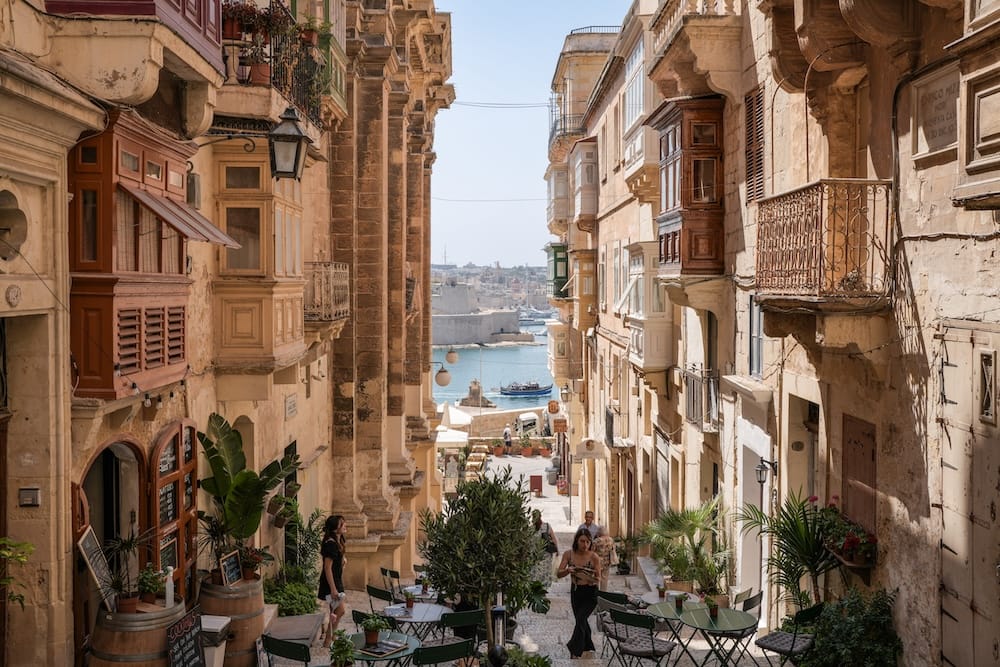
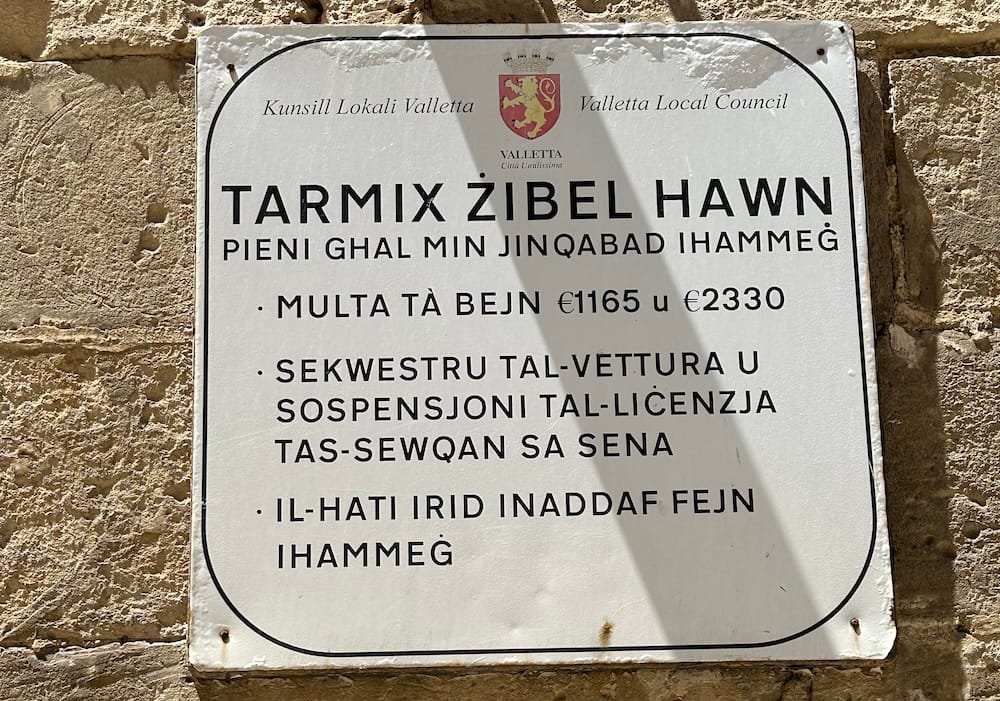
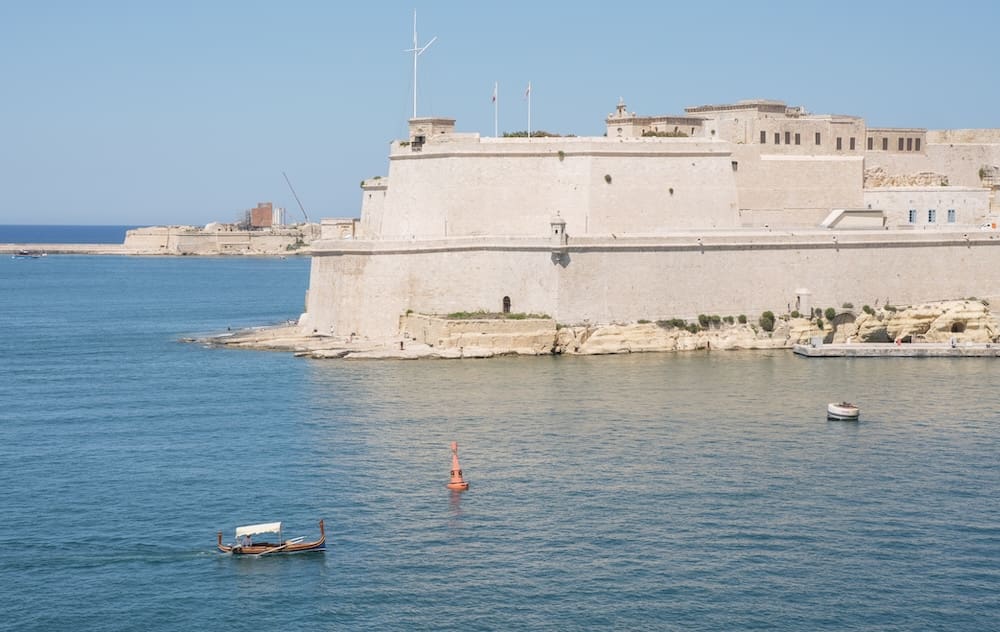
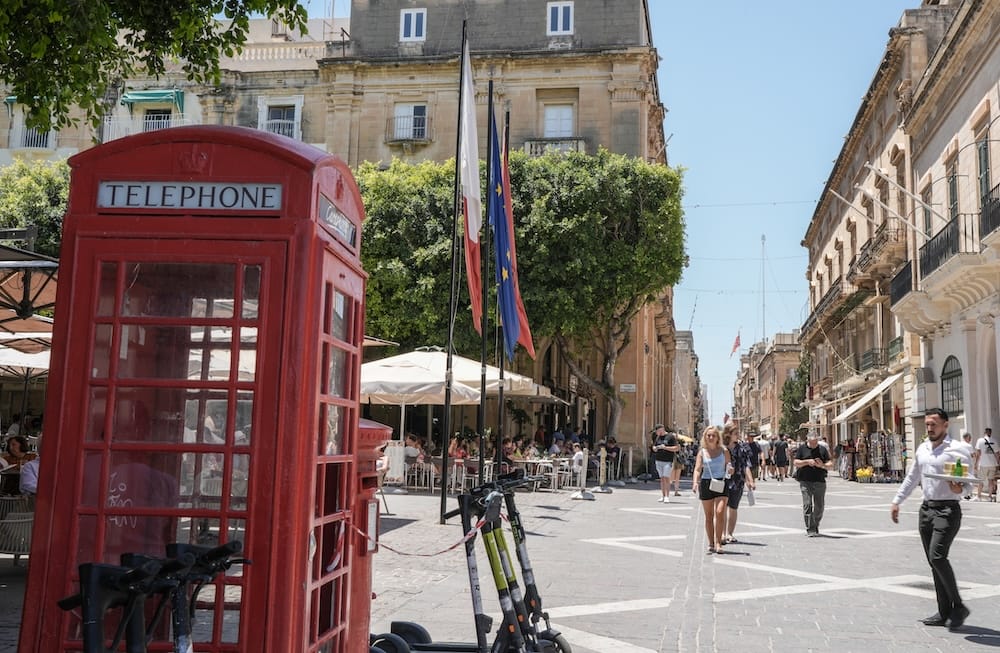
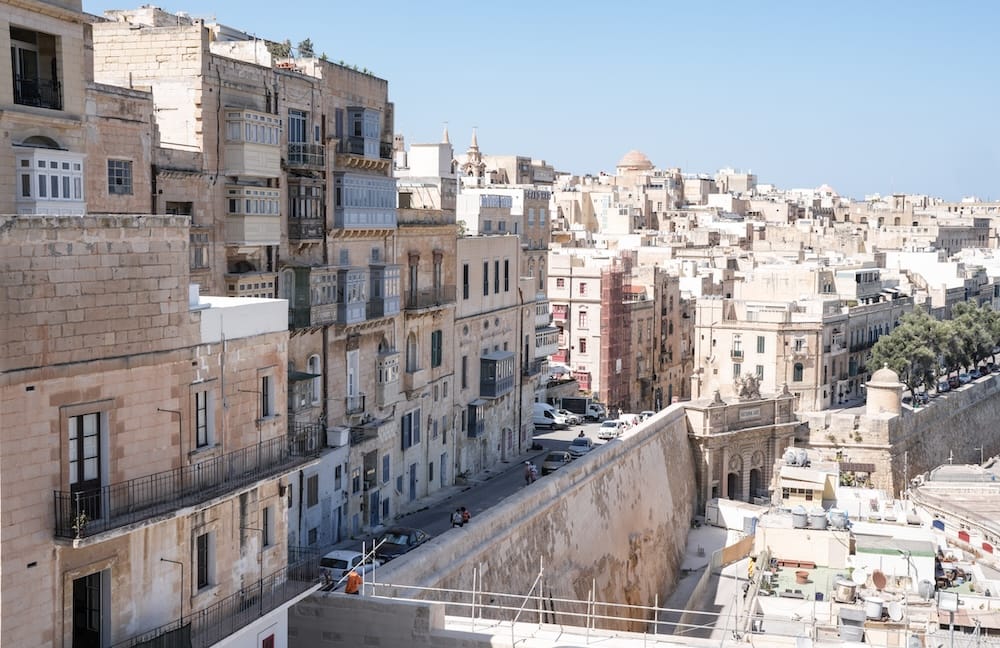
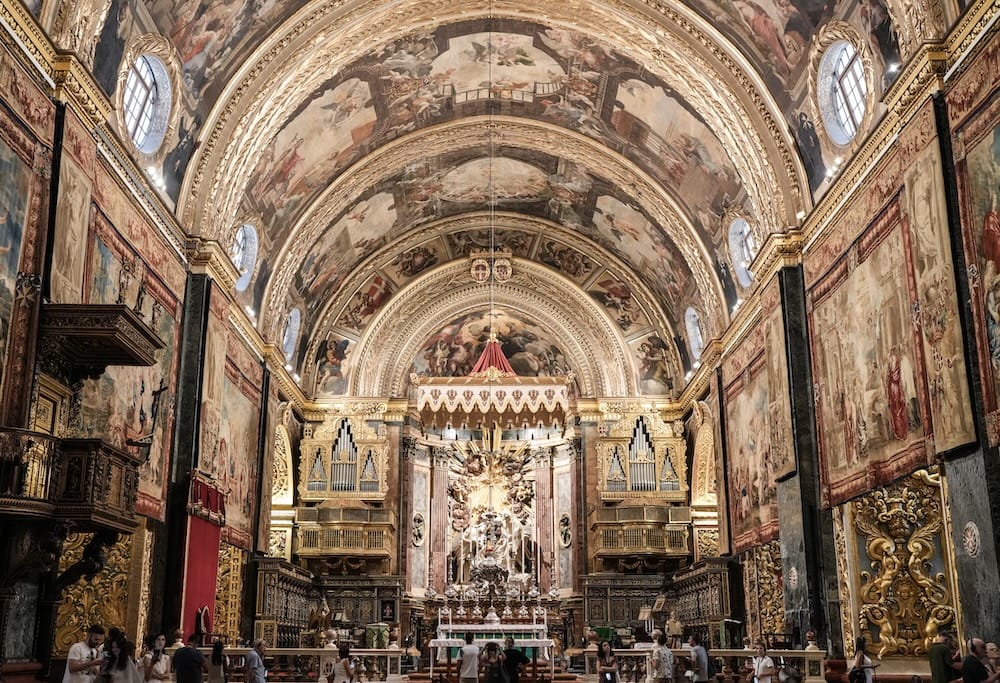
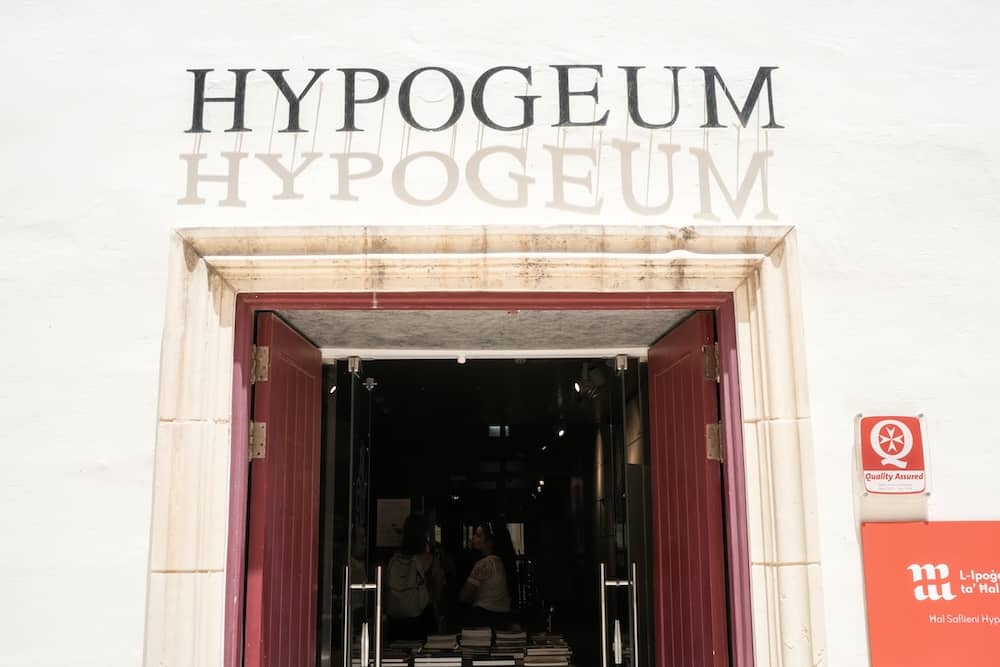
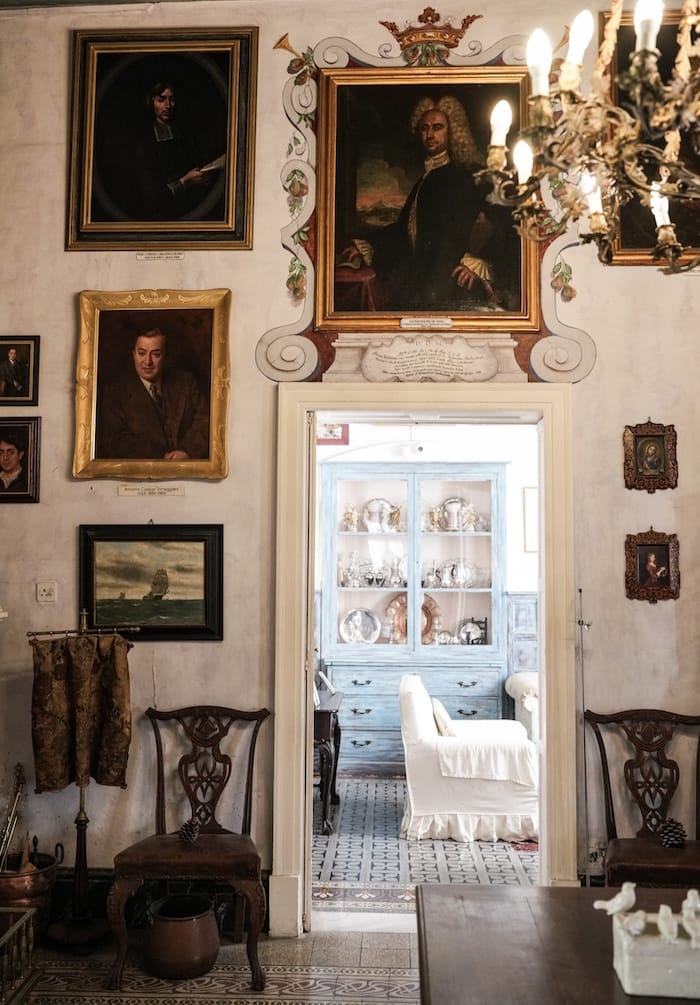
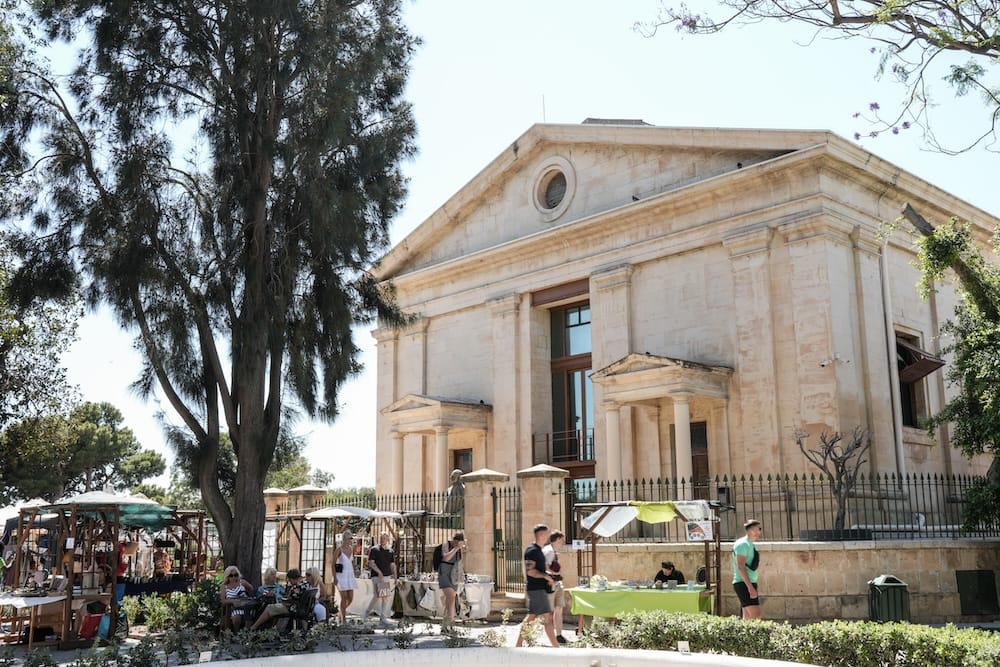
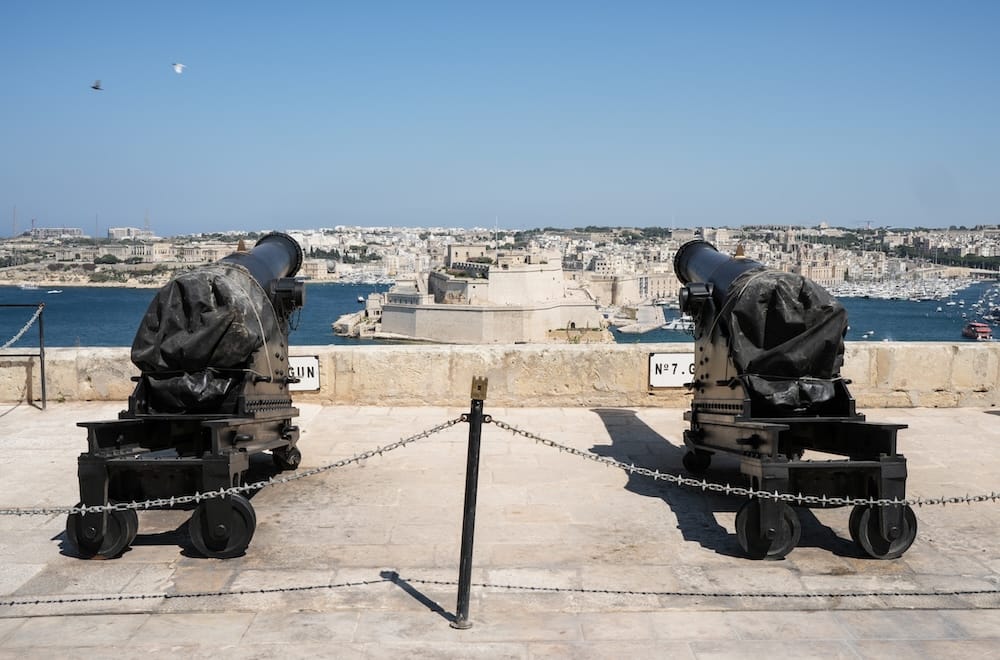
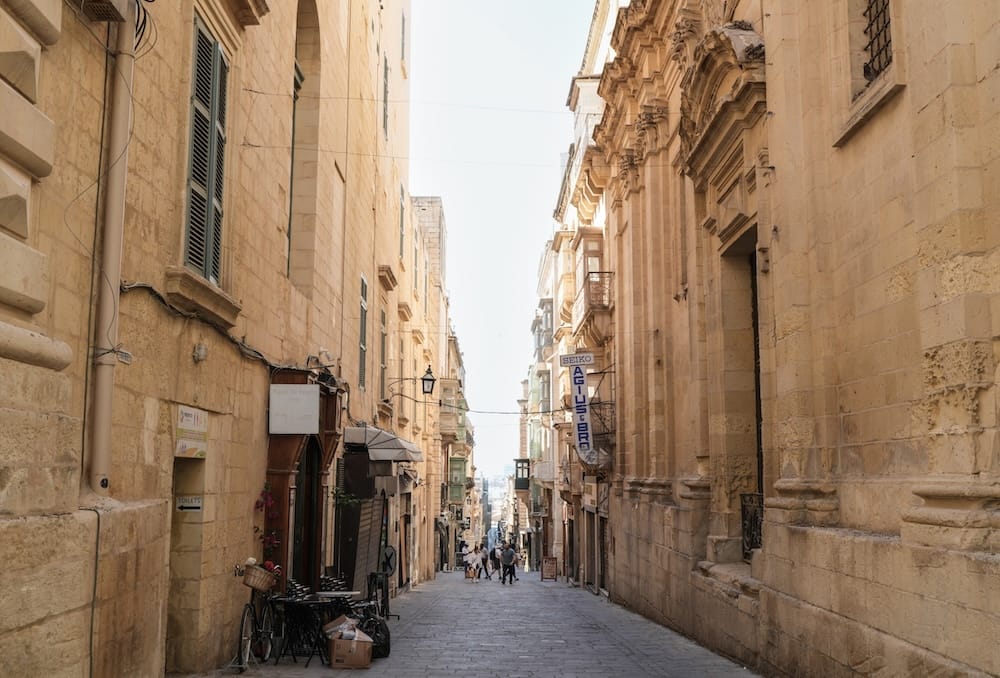
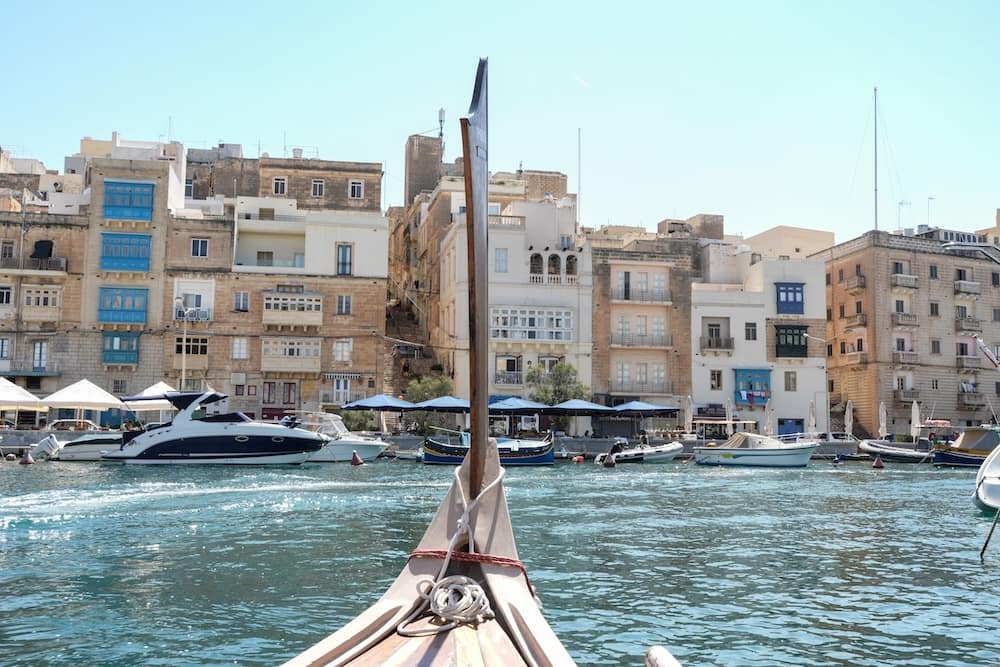
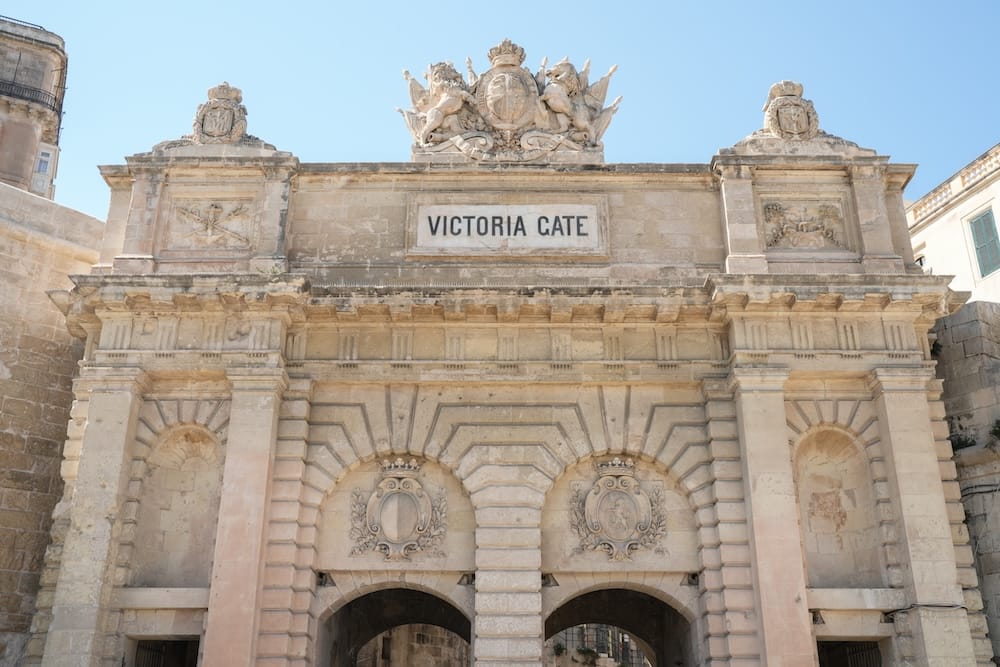
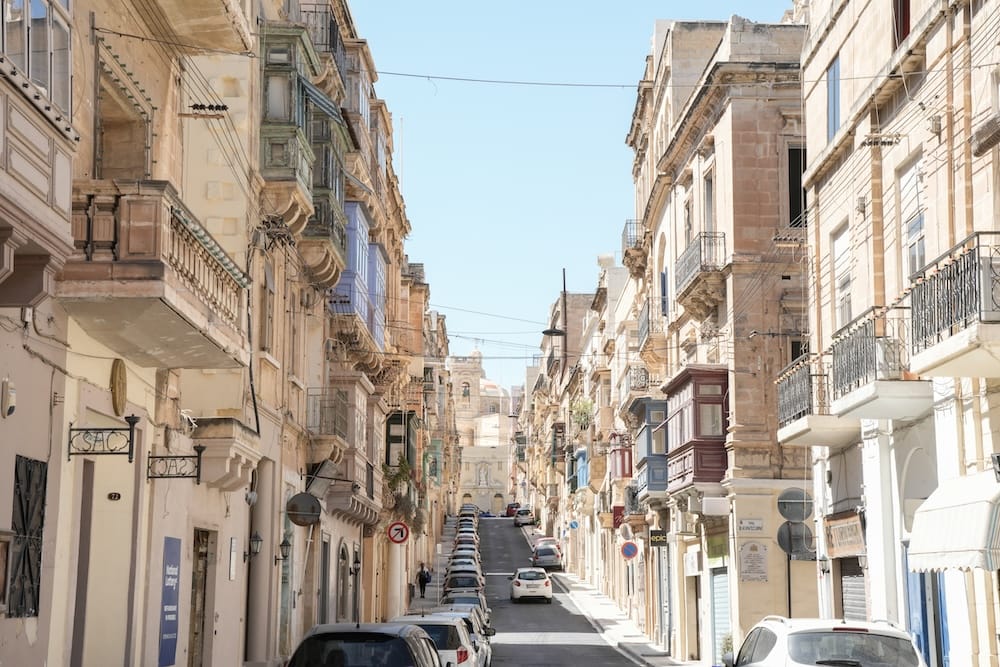
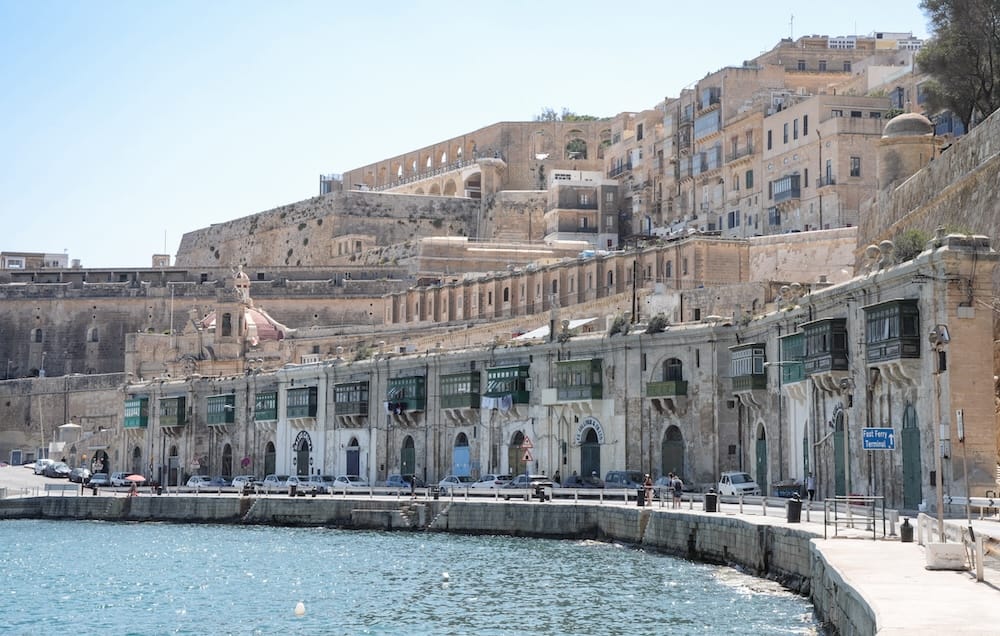
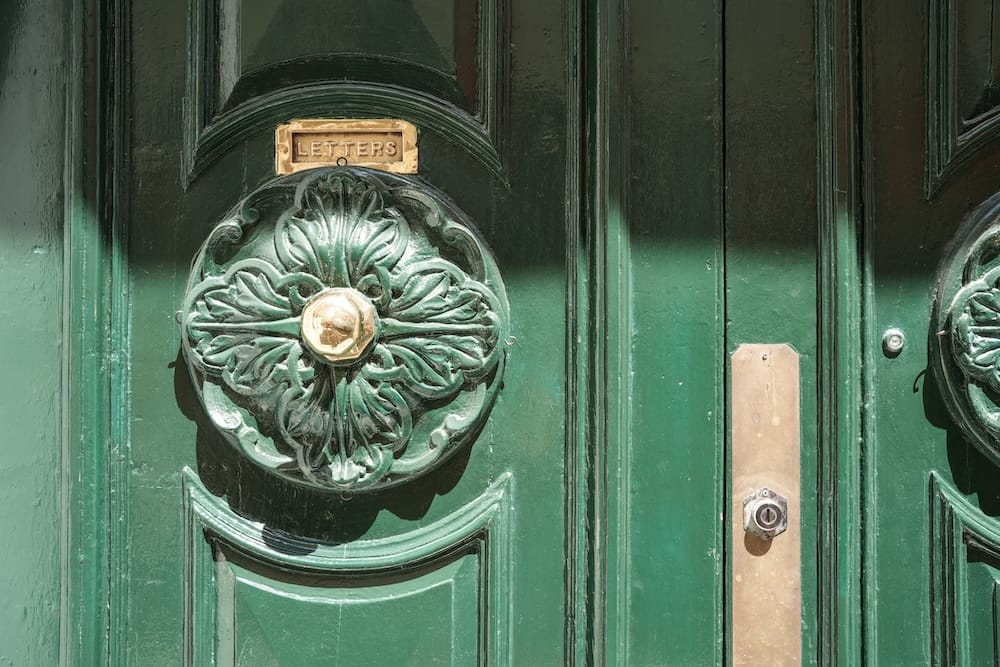
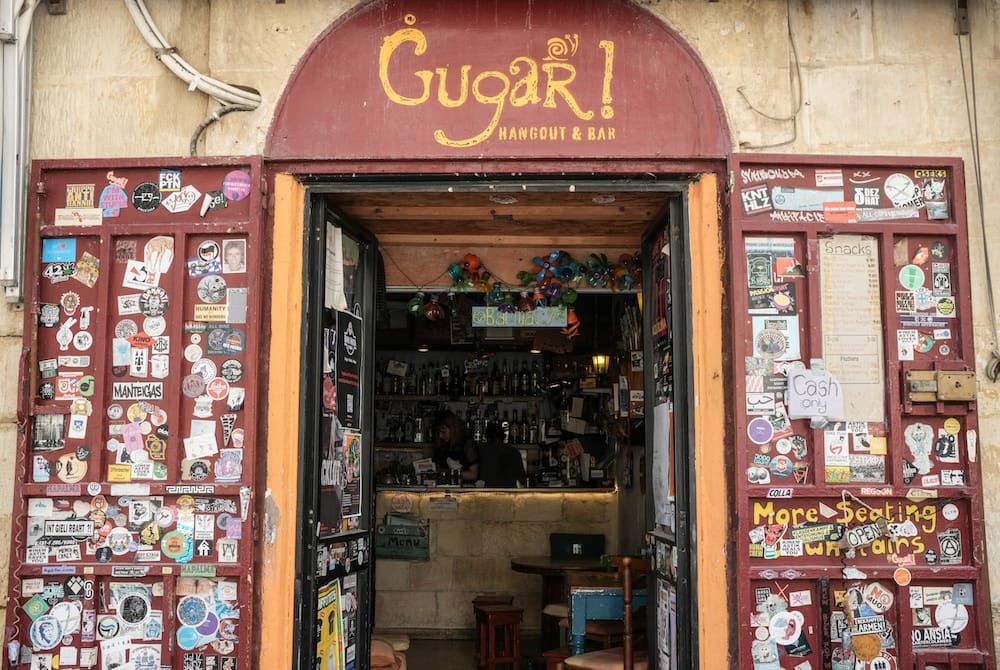
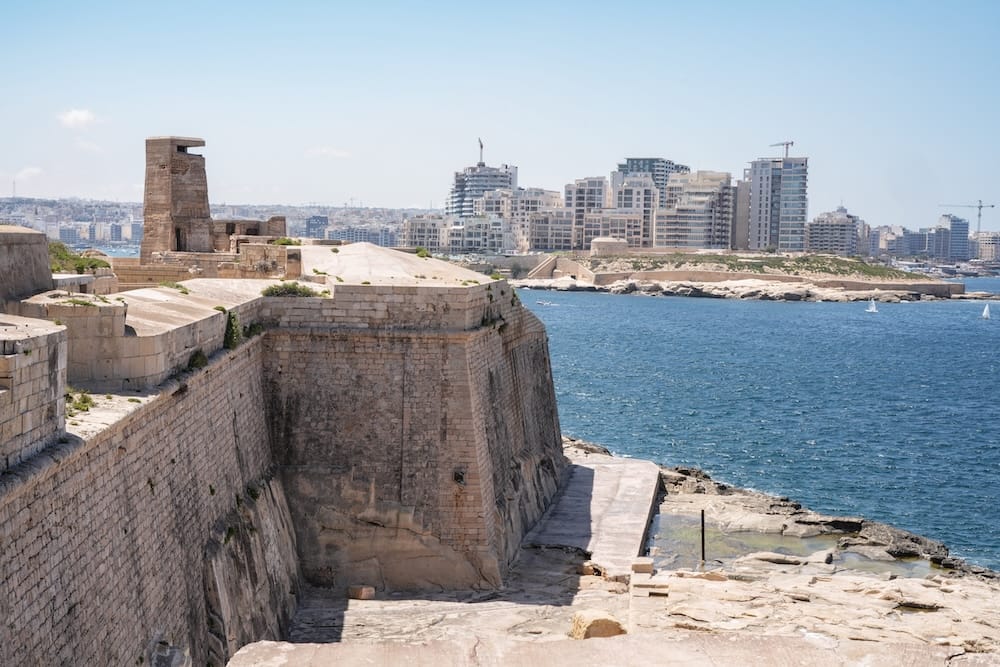
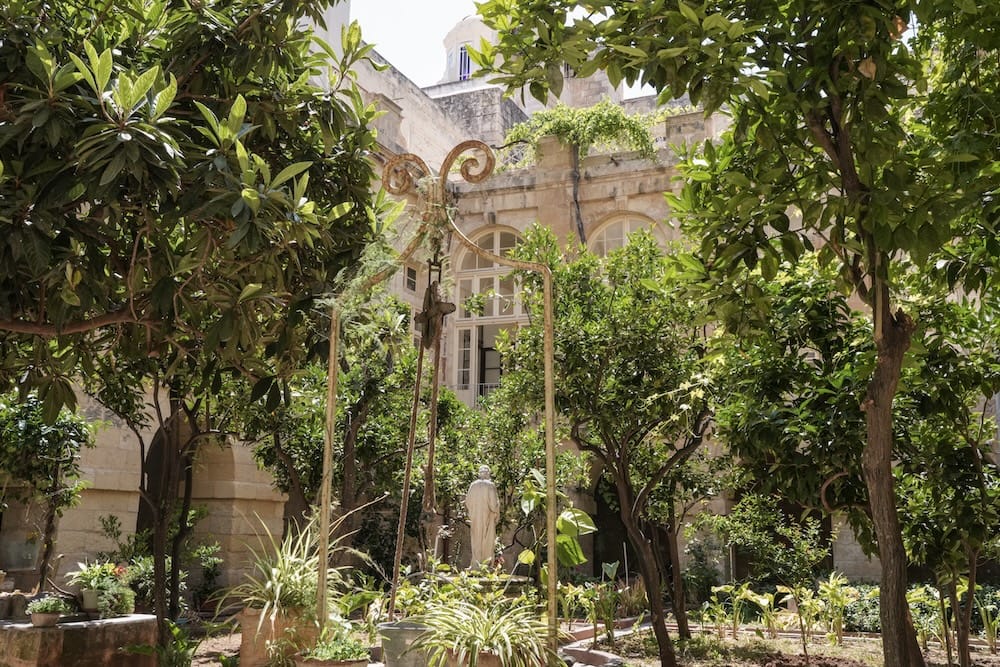
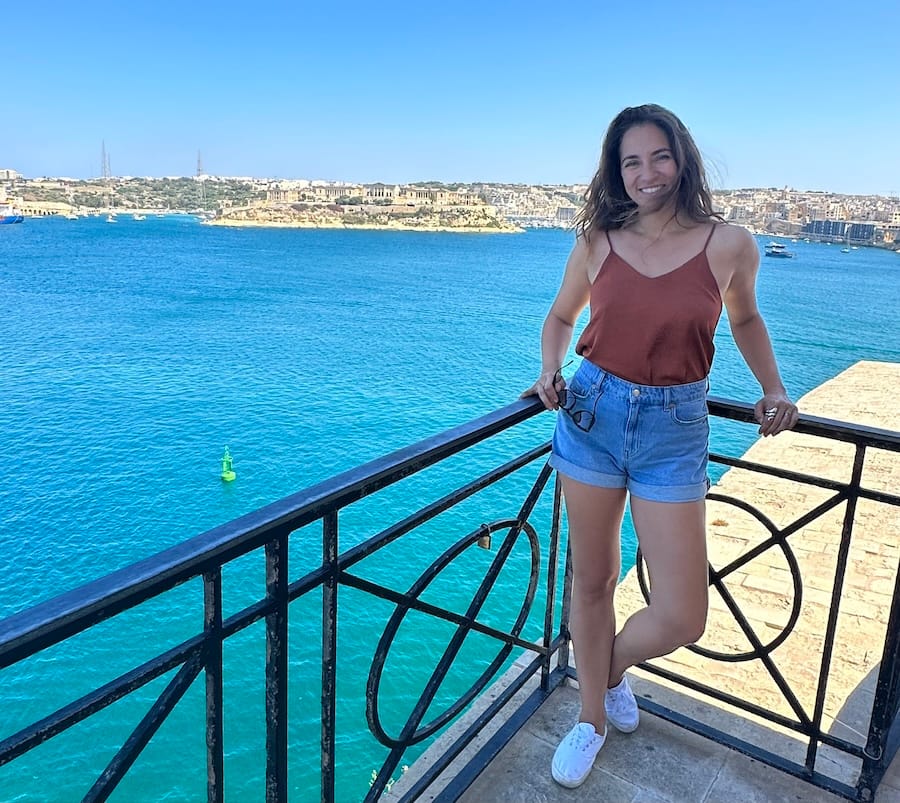
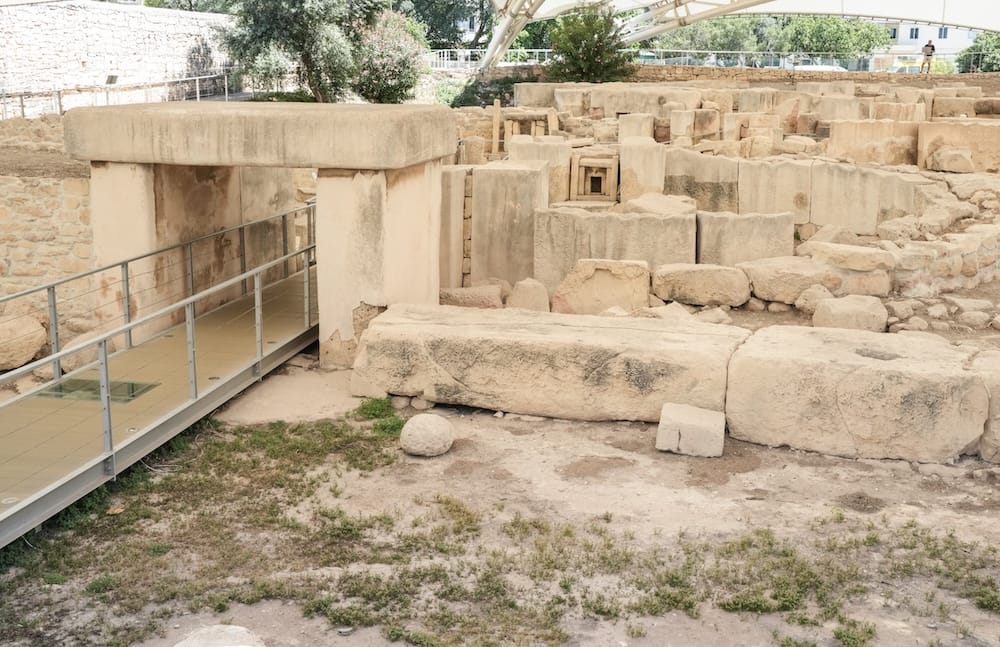
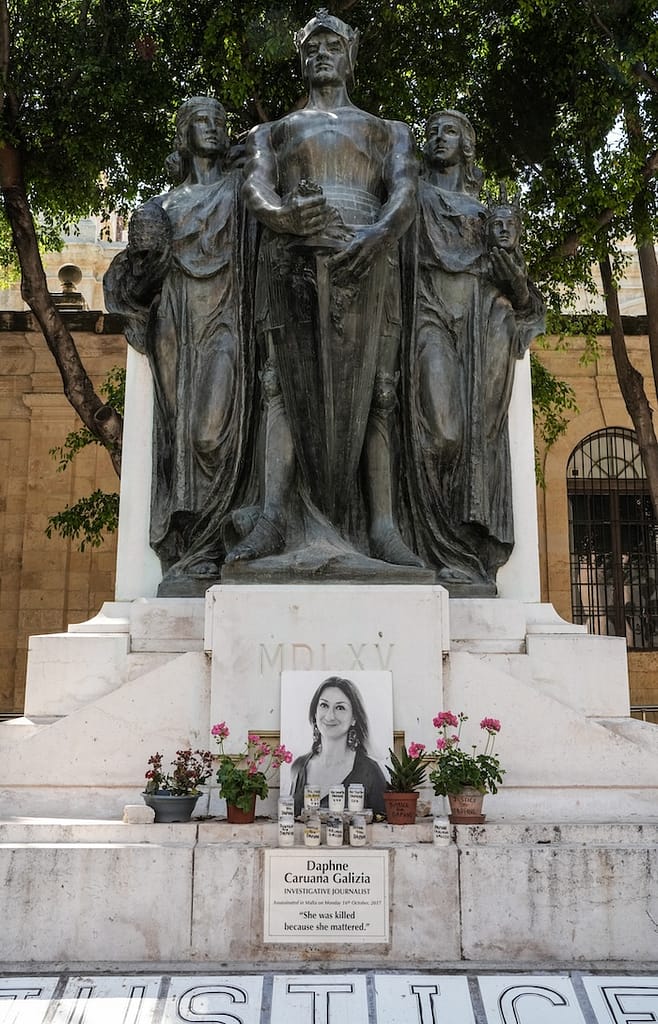
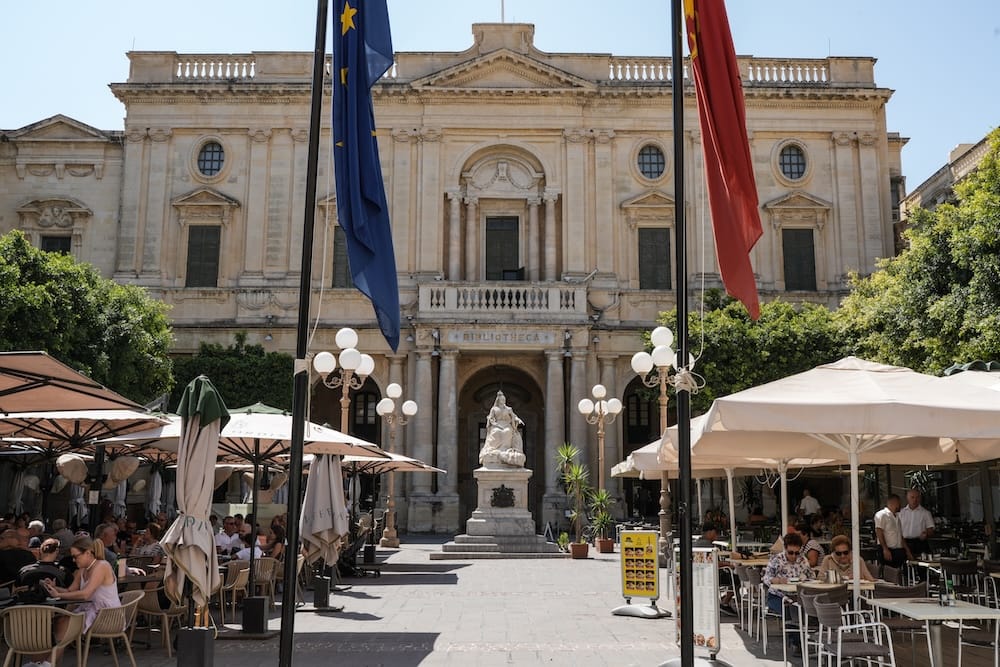
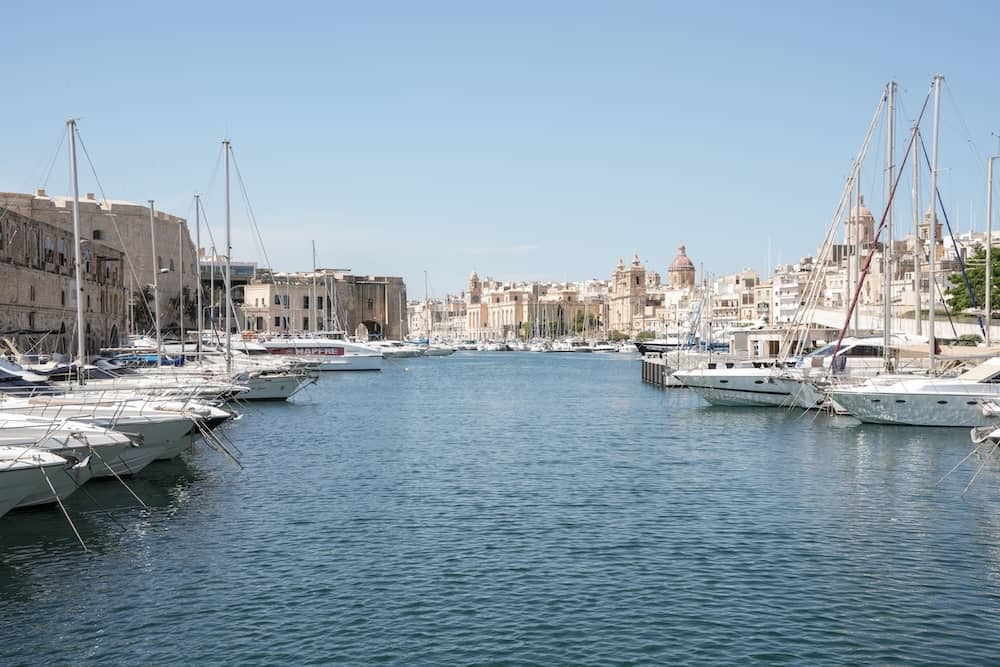
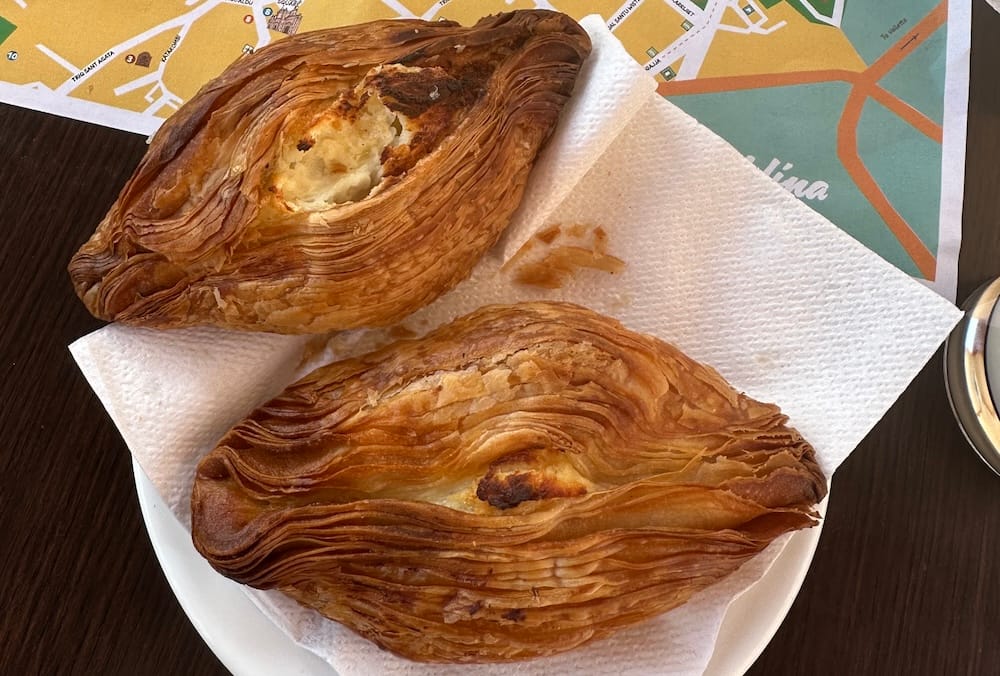
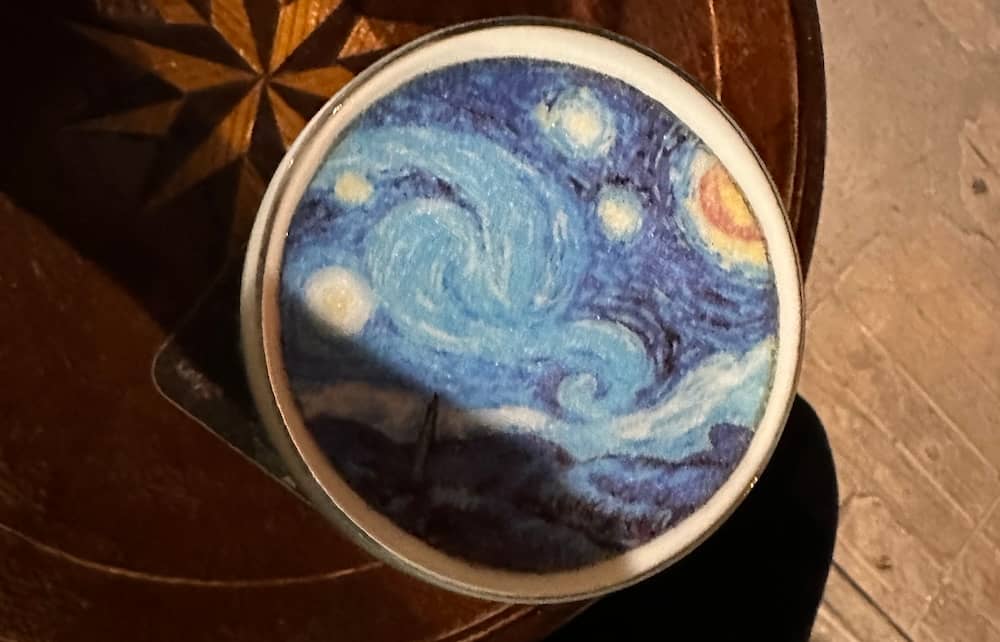
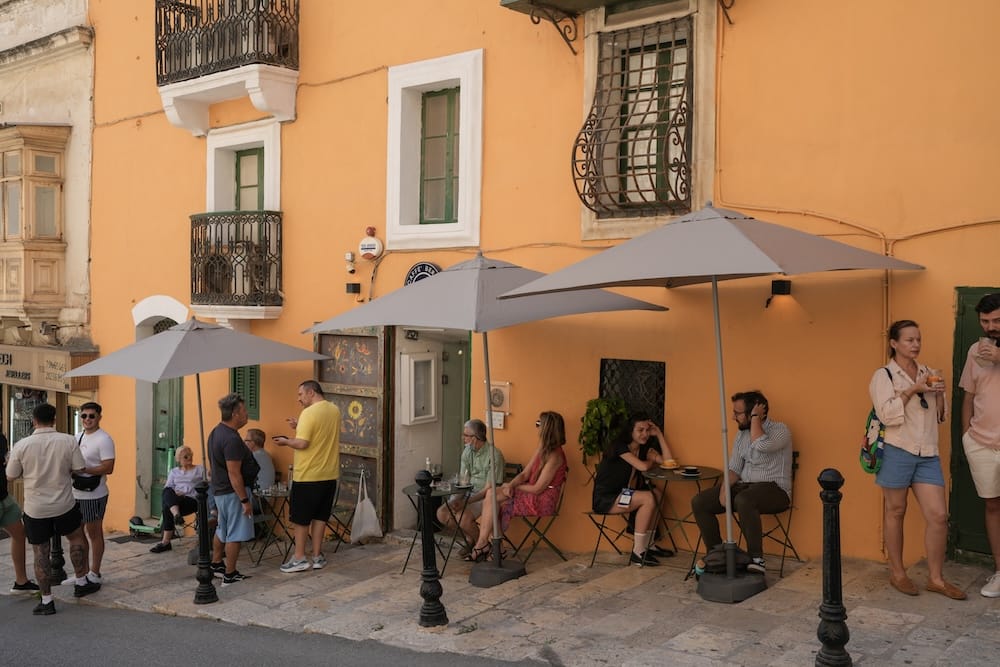
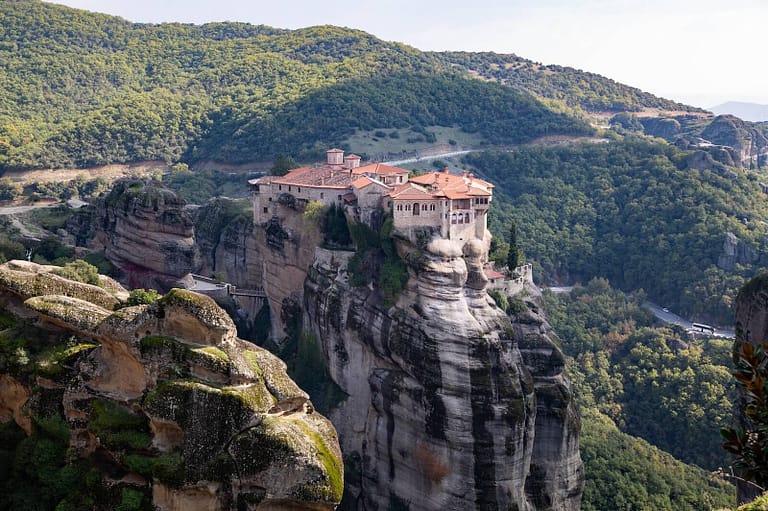
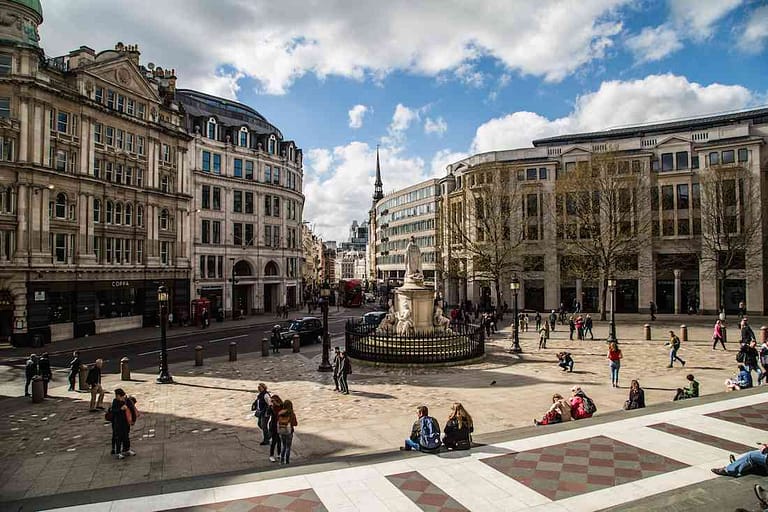
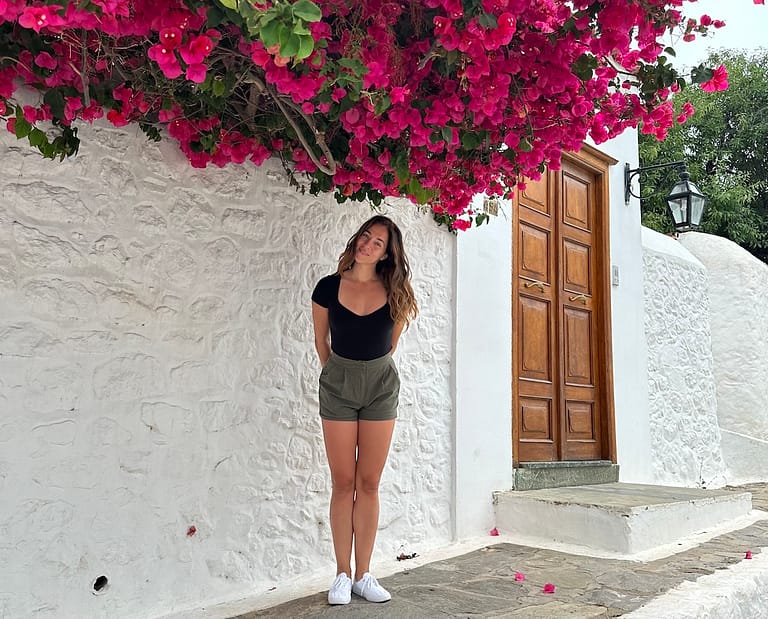
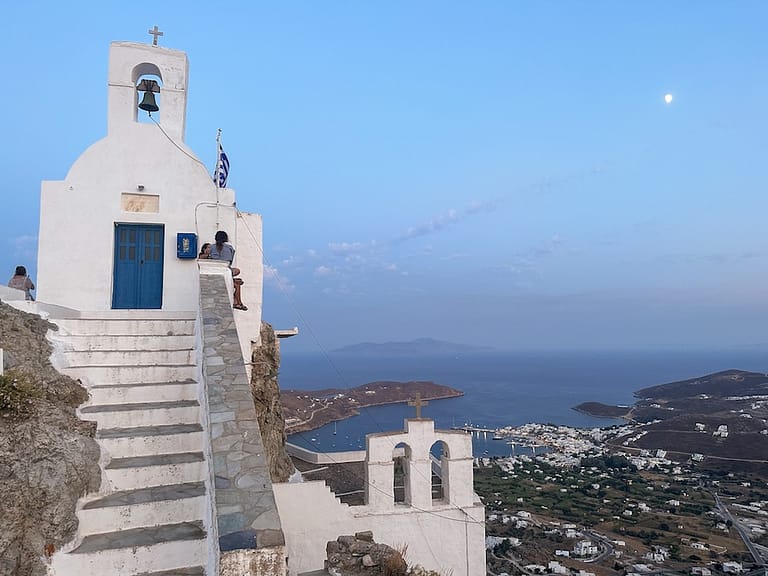

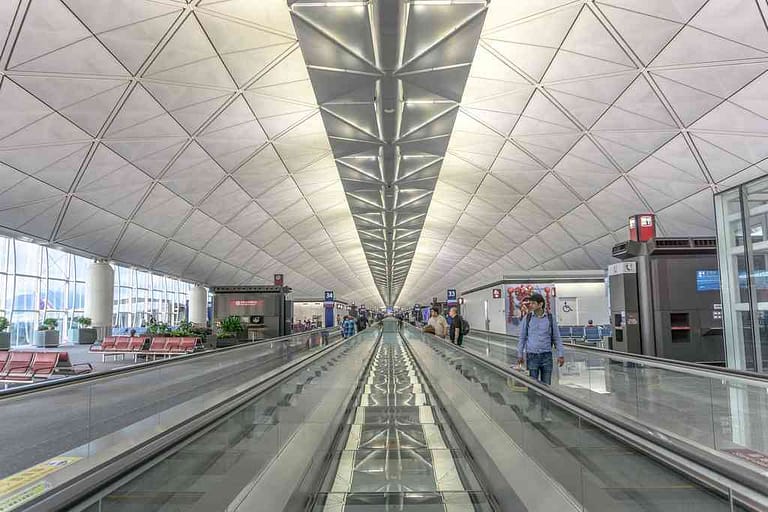
Several places mentioned are a ways from Valletta. Take a bus. Also, while in Valletta, visit the Armory. Super interesting.
Correct, but as long as they were within an hour, which all of them are, and most much less by taxi (20-30 minutes), I figured it was worth mentioning for people who want to explore the general area.